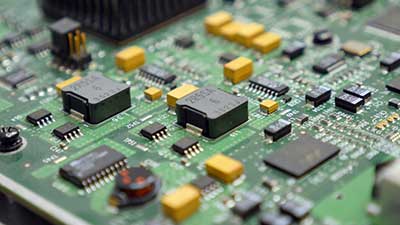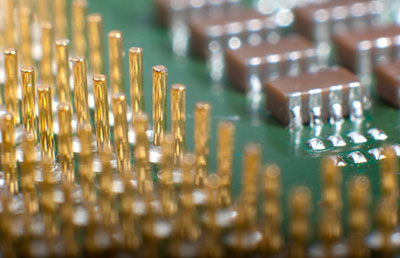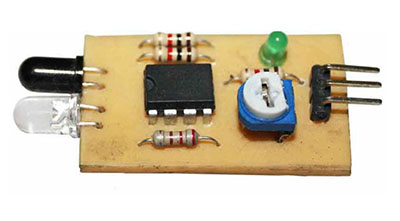Close to a fifth of PCB failures are due to contamination left behind from the manufacturing and assembly processes. Contamination during fabrication can occur when drilling, etching, or creating PTHs. And during assembly, it can happen in the soldering process (flux residue), solder preparation, and as component biocides in pick-and-place machines. This ionic contamination can lead to several issues that cause the circuit boards to be defective. So we will look at what causes ionic contamination and how to test it in PCBs. Read on to learn more!
Contents
- Ionic Contamination: What Is It?
- Typical Types of Contaminants
- Aggressive Chemistry
- Inadequate Bare Board Cleanliness
- Flux Residues
- Moisture Trapped Between The Layers
- Inter-Layer Residues
- Effects of Ionic Contamination
- Corrosion
- Dendritic Growth
- Electrochemical Migration (ECM)
- Ionic Contamination Cleanliness Measurement Tests
- The Resistivity of Solvent Extract Test (ROSE)
- Modified ROSE Test
- Ion Chromatography Test
- Resistivity Testing in Batch Format Aqueous Cleaning Systems
- Wrap Up
Ionic Contamination: What Is It?
Ionic contamination occurs when +ve and -ve ion residues get left behind during PCB manufacturing or assembly processes. These residues affect the board's functionality and reliability because they are conductive.
They contain molecules and atoms that disassociate to positively and negatively charged elements when exposed to moisture, making them conductive. At first, the contaminants have a zero net charge, but their composition gets positive and negative ions as the electronic circuit boards go through multiple manufacturing processes.

A damaged circuit board was caused by shorting.
So how the manufacturer handles the boards during the manufacturing process is a critical determinant of whether the PCB will have ionic contamination. And some of these ionic residues include the following.
- Salts
- Organic and inorganic acids
- Perspiration
- Plating chemistries
- Flux activators
- Ethanolamines
Also, look for nonionic materials like mold releases and process oils that can affect the PCB assembly steps.
Special Offer: Get $100 off your order!
Email [email protected] to get started!
Typical Types of Contaminants
The typical sources of ionic contaminants include the following.
Aggressive Chemistry
Manufacturing PCBs requires some chemicals, especially in the etching process. But the copper etching liquid and other chemicals like water-soluble soldering chemistry can leave residues that alter a PCB's conductivity. Etching chemicals are particularly highly conductive and corrosive. So they can cause leakage currents if you don't rinse or neutralize them.

A PCB dipped in a chemical solution for etching
Inadequate Bare Board Cleanliness
Most ionic contamination issues come from the board materials. So the fabrication process and exposure to environmental factors can leave salts, dust, oils, and other residues. Therefore, manufacturers should ensure they leave no contaminants before proceeding to the next step (adding electronic components).
Flux Residues
Conductive flux residues from the soldering process include binders, saponifiers, rheology components, and unutilized activators. The manufacturer should use solvent cleaners, vapor degreasing, aqueous chemistries, or other similar techniques to clean these ionic impurities from the board.

Robots used for automatic PCB soldering
Moisture Trapped Between The Layers
Ionic contaminants become more conductive when they mix with moisture, which might cause short-circuiting. Manufacturers usually bake the boards to evaporate the water trapped inside the layers.

A PCB with a short circuit
Inter-Layer Residues
These residues spread through the layers during the drilling and plating processes and add to the ionic content present in the PCB.

PCB drilling for chip mounting
Effects of Ionic Contamination
The following effects will occur if you don't eliminate ionic compounds in a circuit board.
Corrosion
Circuit boards wear out over time because they contain metals, but these PCB contaminants cause corrosion that shortens their lifespan. So the board won't attain its intended lifespan. The process usually occurs due to moisture, which forms rust by oxidizing the metal. The oxidized metal flakes off and loses its chemical properties required to conduct current through the circuit, resulting in electrical failures. Also, moisture combined with ionic impurities increases the risk of shorting.

A closeup image of a damaged circuit board
Dendritic Growth
growth implies the development of conductive silver metals that extend through an electrolyte due to a DC voltage bias. The growth of dendrites occurs faster when solder mask pores retain ionic PCB contaminants like flux. Intermittent operation or short-circuiting can happen when dendrites collide.
Electrochemical Migration (ECM)
Electrochemical migration implies the formation of ions between two copper features under a water solution. An electric field applied to these copper features forms an anode and a cathode. This current dissolves the copper on the anode and deposits it on the cathode, hence the migration. The migration causes dendrite growth that can direct electrical current where it should not go. This growth can cause short circuits or create alternative paths that alter the accuracy of current measurements.

A dendrite (metal crystal) is formed by electrochemical migration during electrolysis.
Ionic Contamination Cleanliness Measurement Tests
Manufacturers clean circuit boards as standard practice during manufacturing. But they need to do tests for ionic contamination to determine the effectiveness of their cleaning processes.
Cleanliness tests check for ionic materials to determine the effectiveness of PCB cleaning processes. And they include these four testing procedures.
The Resistivity of Solvent Extract Test (ROSE)
checks for bulk ionic impurity content that can cause PCB contamination. It tests for bulk ions/square inch and draws ions on the circuit board into a solvent.
Modified ROSE Test
As the name suggests, a modified ROSE test alters the testing method described above. The modification is in the form of adding a thermal extraction method. So instead of pulling ions out as the standard ROSE test, this modified version first elevates the temperatures of the circuit board and the solvent. After drawing the ions, the solution undergoes testing in ionograph-style equipment.
Ion Chromatography Test
This test resembles the modified ROSE test because it features a thermal extraction method. The extraction liquid then goes through testing in an ion chromatography test unit to determine the information about each ionic compound present in each sample. Also, it checks the ionic compound's the concentration/square inch.

An ion chromatography machine
Resistivity Testing in Batch Format Aqueous Cleaning Systems
The instrument used to clean circuit boards usually features a built-in resistivity measurement tool. Although the results from this instrument don't meet IPC standards, they can provide insight into the effectiveness of the cleaning process.
Wrap Up
In conclusion, ionic contamination can reduce a circuit board's lifespan by degrading the circuitry. And the issue usually occurs during the manufacturing and assembling processes. So you should look for a fabricator who adheres to the highest quality standards if you want a durable and reliable PCB. At OurPCB, we meet these quality standards and have the latest machines for PCB cleaning to blast away all contaminants as we build these products. Contact us today to get a free quote on your design layouts.
Special Offer: Get $100 off your order!
Email [email protected] to get started!







